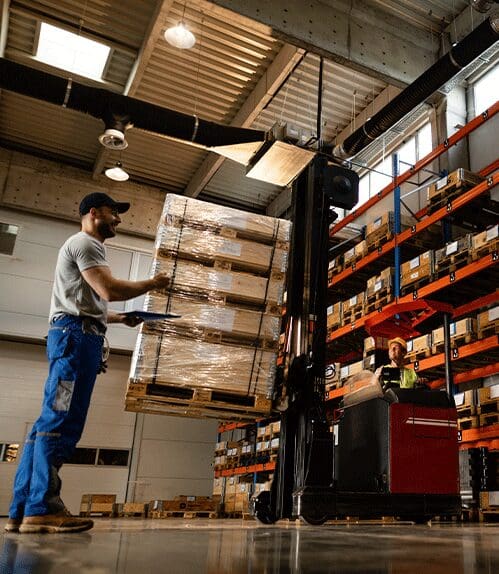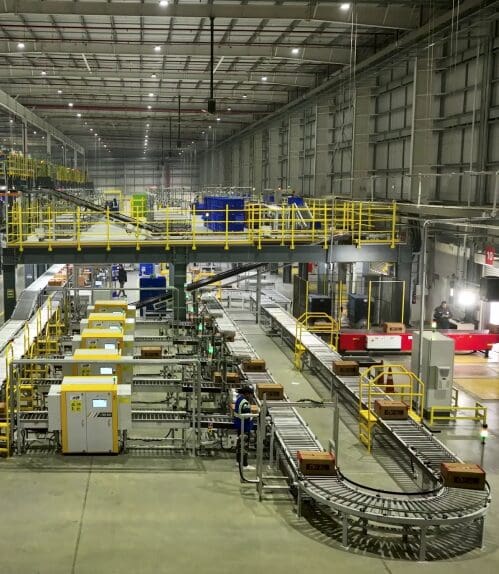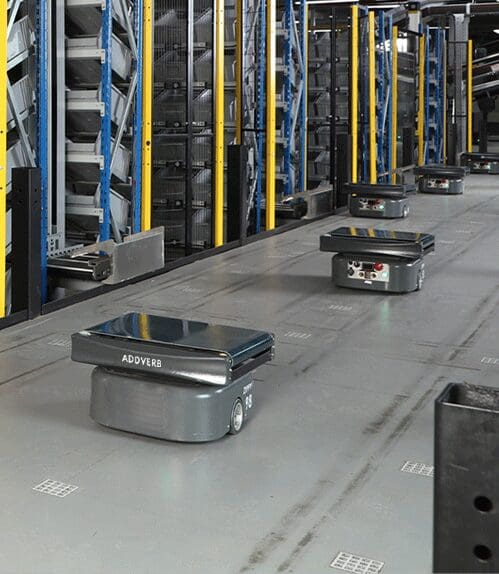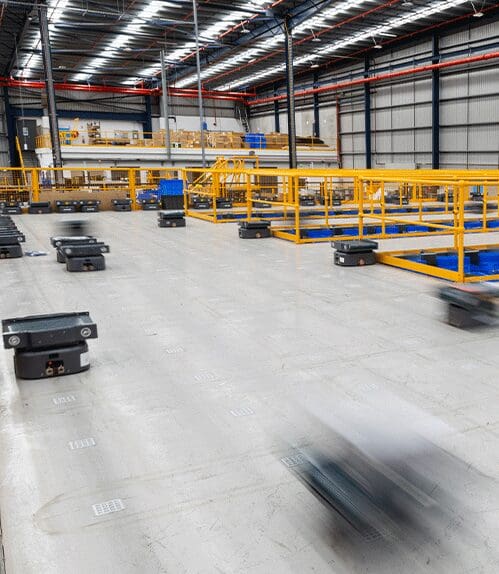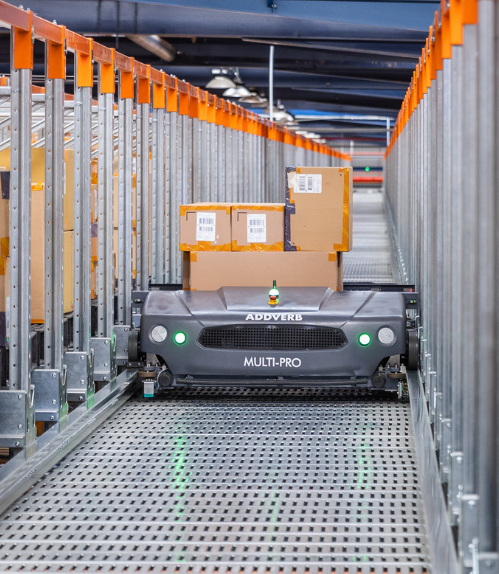Table of Contents
The global warehouse management system market size was valued at USD 3.94 billion in 2023 and is projected to grow at a compound annual growth rate (CAGR) of 19.5% from 2024 to 2030. Software is the most lucrative component segment registering the fastest growth during the forecast period.
Grandviewresearch
New innovative warehouse software solutions are changing the traditional warehouse. With businesses looking to achieve efficiency, accuracy and sustainability, warehouse management software trends can provide a way to understand what’s new. Today, modern warehousing is not just about storing goods it’s about using artificial intelligence, cloud technology, real time data analytics, and a digital twin to optimize every process involved in the supply chain.
Join us as we explore the cutting-edge trends that are demystifying the warehouse code and redefining the operation succeed in 2024.
Modern Trends in Warehouse Software
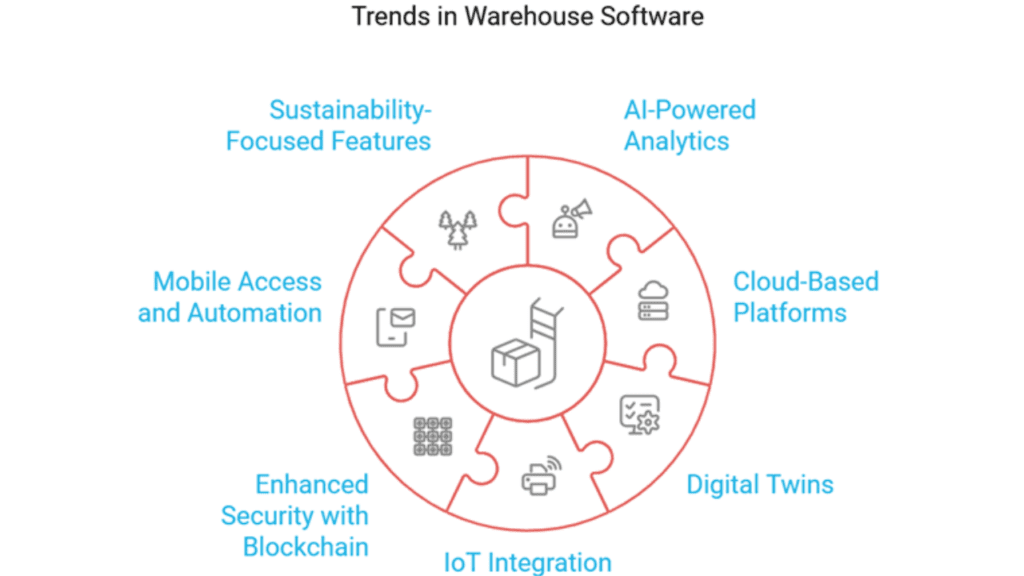
AI-Powered Analytics:
AI and machine learning are used in modern warehouse software for validating real time data and predictive inventory management so that we don’t see stock outs or over stock situations.
Cloud-Based Platforms:
According to Grandview research the cloud segment held the highest revenue share in 2023 and is expected to emerge as the fastest-growing segment, registering a CAGR of 20.1% from 2024 to 2030.
Warehouse operation has become cantered around cloud solutions, these solutions are scalable and up to date. This shift enables warehouses to shed the infrastructure constraints and deploy quickly across the locations.
Digital Twin:
This technology helps warehouse environments to create a digital replica, optimizing layout, workflow, and equipment efficiency. Digital twins allow companies to test changes without testing physical changes.
IoT Integration:
With Internet of Things (IoT) sensors connected directly to the Warehouse Management Systems (WMS) to provide an accurate information on machines, conveyors, and pallets. This integration enables proactive maintenance and asset management.
Enhanced Security with Blockchain:
Pharmaceuticals or food logistics require a strong audit trail, and blockchain provides the secure, traceable transactions that are especially valuable in these sectors. A Deloitte survey found that 53% of executives identified blockchain as a critical priority for their organization in 2023, emphasizing its role in ensuring data integrity and enhancing security.
Mobile Access and Automation:
Mobile interfaces allow managers to monitor their warehouse operations on the go. Mobile access is a coupled technology with autonomous mobile robots (AMRs) and automated guided vehicles (AGVs) to promote oversight for seamless operation.
Sustainability-Focused Features:
New warehouse software features that tracks carbon footprint and optimizes energy usage reflect the industry shift to sustainable practices. A 2022 survey by Capgemini revealed that 61% of supply chain leaders consider sustainability a key investment area, driven by regulatory pressures and corporate social responsibility.
Warehouse Software
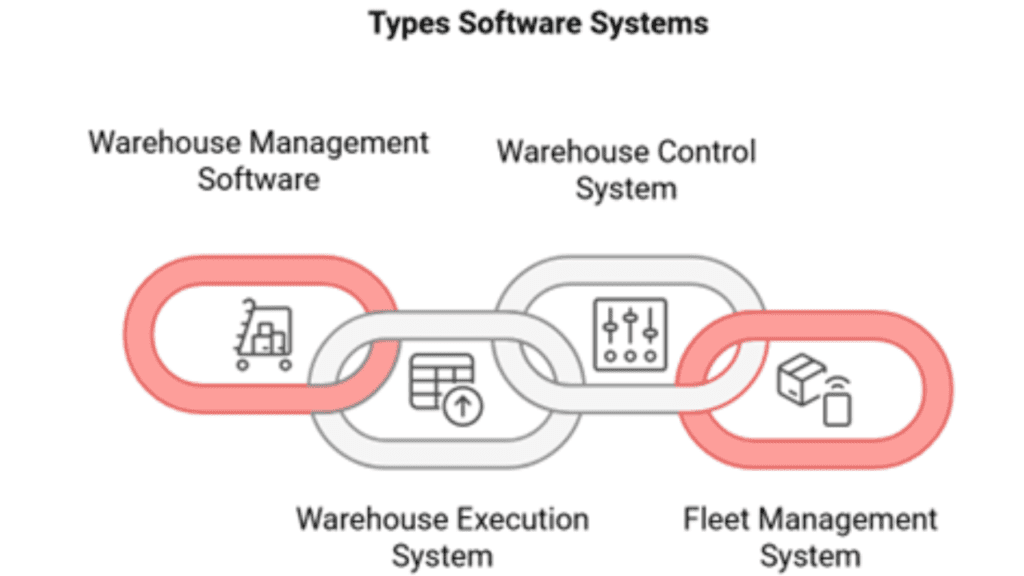
Warehouse Management Software (WMS)
The services segment held the highest revenue share in the WMS market, contributing to more than 81.23% revenue share in 2023, GrandViewResearch
While robotics play a crucial role in automation, a warehouse management system (WMS) is essential for getting them to work with an existing operation in an automated way. The comprehensive warehouse software suite from Addverb ensures good communication between systems.
Optimized Workflow: Various warehouse functions are orchestrated by advanced warehouse software.
Data-Driven Insights: Performance data for businesses allows them to make informed decisions, optimize workflows, and improve efficiency on time.
Seamless Integration: Addverb warehouse software solutions make easy scaling and upgrades possible so that businesses can scale without impacting existing businesses.
Warehouse Execution System
A warehouse execution system (WCS) is a software platform to manage the real-time execution and control of warehouse processes. WES connects higher-level systems, e.g., Warehouse Management Systems (WMS), to the physical portion of the warehouse, e.g. equipment, automation systems, and people.
ASRS System Monitor: The Concinity monitors and coordinates ASRS equipment, schedules tasks, optimizes control and equipment allows for real-time visibility, and boosts ASRS operations in the warehouse.
Increased Productivity: On the other hand, Concinity dynamically assigns a task to resources (such as equipment, robots, or personnel) according to priority and availability.
Real-Time Visibility: Real-time visibility into warehouse operations, inventory levels, task status, and much more, is provided by Concinity.
Warehouse Control System
The Warehouse Control System (WCS) is a warehouse software application that controls and manages the operation in a warehouse or distribution center. It’s like a brain of the warehouse, coordinating and optimizing different tasks and processes so you can work efficiently and accurately.
PTL integration: Mobinity delivers PTL integration with greater order-picking accuracy, increased productivity, and streamlined process through real-time task assignment and monitoring to visually guide the operators.
Improved Inventory Management: Mobinity, automated replenishment strategies can also be implemented to replenish stock in sequence and minimise stocking out-of-stock situations.
Data Analytics and Reporting: We collect and analyse a vast amount of operational data, giving insights on warehouse performance, productivity, and KPIs.
Fleet Management System (FMS)
The primary goal of a Fleet Management System (FMS) is to manage and control a fleet of robots. It allows centralised control, monitoring, and coordination of robot operations to ensure a high degree of robot efficiency, productivity, and utilization.
Dynamic Task Assignment: Dynamic task assignment in Movect optimises task allocation based on real-time conditions, improving efficiency, resource utilisation, and adaptability to changing requirements.
Centralised Management: Robot activities can be monitored, controlled, coordinated, and managed from a single dashboard, simplifying control and boosting productivity for fleet managers.
Accurate Control and Coordination Movect enables precise control over robot operations, allowing fleet managers to monitor their status, location, and performance in real time.
What is Right for You?
But to answer this question is subjective, but it can be made more objective by asking the right questions. Learn what is the best supply chain solution by understanding Inventory movement in a facility.
At what level of automation is the facility?
How are inventory movements occurring inside the warehouse?
Is this a third-party logistics (3PL) with a single sign-on requirement of multiple customers?
How many end users does the facility serve?
How important is inventory management to your operation?
How are the inventories being moved in the warehouse?
When evaluating the best fit, it is essential to properly forecast future expansion requirements. Since implementing and maintaining solutions can be expensive, having a clear understanding of your needs will help you find the most appropriate solution at a fair price.
End Note
The transformation of warehouse software in 2024 addresses the demands for speed, accuracy, and environmental responsibility in logistics. These innovations empower companies to streamline their operations, reduce costs, and achieve a competitive edge in today’s dynamic market. As warehouse software capabilities continue to expand, warehouses can expect even greater control and adaptability in managing their supply chains.

FAQ
What is a Warehouse Management System (WMS)? A WMS is a business application designed to control the flow of inventory into, within, and out of a company’s distribution center. It manages inventory, labor tasks, and orders from receipt to shipping, ensuring efficient warehouse operations
How does a Warehouse Control System (WCS) function? A WCS is a real-time, integrated control solution that manages the flow of items, cartons, and pallets as they travel on automated equipment like conveyors, sorters, and ASRS. It provides a single point of control to efficiently direct and manage these automated solutions within the warehouse.
What is a Warehouse Execution System (WES)? A WES combines functionalities of both WMS and WCS, orchestrating and optimizing warehouse operations by managing resources, orders, and material flow. It ensures that all warehouse activities are synchronized for maximum efficiency.
How do WMS, WCS, and WES differ from each other? While all three warehouse software aim to enhance warehouse efficiency, they operate at different levels:
- WMS focuses on inventory management and order processing.
- WCS manages real-time control of automated material handling equipment.
- WES bridges the gap between WMS and WCS, coordinating overall warehouse activities.
How can a business determine which warehouse software system is right for them? Businesses should assess their specific operational needs, the complexity of their warehouse processes, and the level of automation in place. Understanding the distinct functionalities and overlaps of WMS, WCS, and WES will help in selecting the most suitable warehouse software system or combination of systems.

